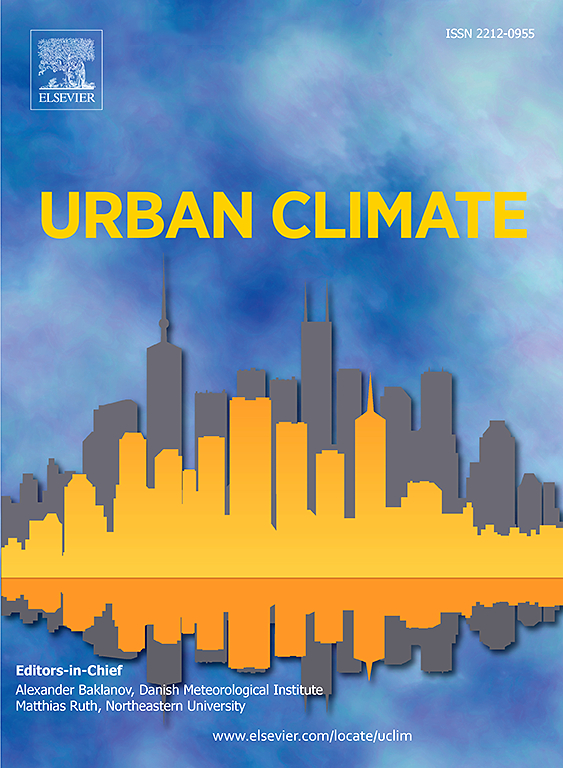Spatial bias in placement of citizen and conventional weather stations and their impact on urban climate research: A case study of the Urban Heat Island effect in Canada
IF 6
2区 工程技术
Q1 ENVIRONMENTAL SCIENCES
引用次数: 0
Abstract
Citizen Weather Stations (CWS) are a source of Crowdsourced Geographic Information for urban climate research, which can provide extensive datasets in areas where data are scarce or unavailable. In this article, we explore the efficacy of using meteorological data from CWS in studying the Urban Heat Island (UHI) effect across Canada during late spring and summer of 2022. In particular, we evaluate the distribution of CWS before relying on them for UHI intensity estimates, since potential spatial biases in placement of these sensors can greatly affect canopy-level measurements. We compared the spatial distribution of Netatmo CWS with conventional weather stations from Environment and Climate Change Canada (ECCC), and found that ECCC sensors are more numerous in rural areas, while Netatmo sensors are present in greater numbers in urban areas. We then computed UHI intensity using urban temperature from Netatmo sensors and peri-urban temperature from ECCC sensors. The resulting intensity values were higher than those estimated using either the Netatmo or the ECCC sensors individually, thus highlighting the influence of sensor distribution in estimating UHI magnitude. Overall, our research explores the distribution of both ECCC and CWS sensors, and highlights their potential complementarity in urban climate research.
市民气象站和传统气象站的空间偏差及其对城市气候研究的影响:以加拿大城市热岛效应为例
公民气象站(CWS)是城市气候研究的众包地理信息来源,它可以在数据稀缺或不可用的地区提供广泛的数据集。在本文中,我们探讨了利用CWS的气象数据研究2022年春末和夏季加拿大城市热岛效应的有效性。特别是,我们在依赖CWS进行热岛强度估计之前评估了CWS的分布,因为这些传感器放置的潜在空间偏差会极大地影响冠层水平测量。我们比较了Netatmo CWS与加拿大环境与气候变化(ECCC)传统气象站的空间分布,发现ECCC传感器在农村地区更多,而Netatmo传感器在城市地区更多。然后,我们使用来自Netatmo传感器的城市温度和来自ECCC传感器的城郊温度计算UHI强度。所得强度值高于单独使用Netatmo或ECCC传感器估计的强度值,从而突出了传感器分布对估计热岛震级的影响。总体而言,我们的研究探索了ECCC和CWS传感器的分布,并强调了它们在城市气候研究中的潜在互补性。
本文章由计算机程序翻译,如有差异,请以英文原文为准。
求助全文
约1分钟内获得全文
求助全文
来源期刊

Urban Climate
Social Sciences-Urban Studies
CiteScore
9.70
自引率
9.40%
发文量
286
期刊介绍:
Urban Climate serves the scientific and decision making communities with the publication of research on theory, science and applications relevant to understanding urban climatic conditions and change in relation to their geography and to demographic, socioeconomic, institutional, technological and environmental dynamics and global change. Targeted towards both disciplinary and interdisciplinary audiences, this journal publishes original research papers, comprehensive review articles, book reviews, and short communications on topics including, but not limited to, the following:
Urban meteorology and climate[...]
Urban environmental pollution[...]
Adaptation to global change[...]
Urban economic and social issues[...]
Research Approaches[...]
 求助内容:
求助内容: 应助结果提醒方式:
应助结果提醒方式:


